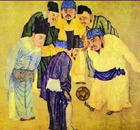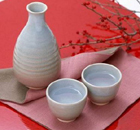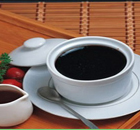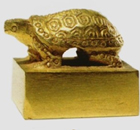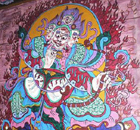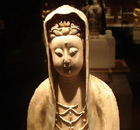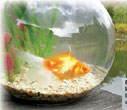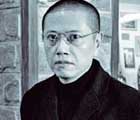Delicacies
Pot luck!
By Pauline D Loh (China Daily)
Updated: 2010-03-13 10:13
 |
Large Medium Small |

Hot pots in China come with a vast variety of soups and ingredients. Pauline D Loh looks at this unique way of feasting together
As far back as the Tang Dynasty (AD 618-907), hot pots were already common. The basic idea is to have a steaming pot of soup in the center of the table surrounded by platters of thinly sliced meats and vegetables that can be cooked by blanching in the hot broth.
There are plenty of regional variations to this form of communal dining.
Beijing's mutton hot pot is almost a signature dish for the Chinese capital. A large brass pot with a funnel in the middle allows hot coals to keep the soup bubbling throughout the meal. Huge platters of thinly sliced frozen curls of mutton or lamb are the main attraction, accompanied by a sort of do-it-yourself dipping sauce that can include sesame paste, soy sauce, chili oil, fermented red bean curd and pickled flowering chives.
There is also the lamb shanks hot pot known as yang xiezi. This is a deeply colored pot of stewed lamb shanks flavored with spices and herbs. While it used to be a simpler dish, these days the simmering pot is often accompanied by platters of tofu, vegetables, black pudding and mushrooms to make it more interesting. For a time, restaurants specializing in yang xiezi were all over Beijing, but the fad seems to be cooling off.
What is now extremely popular is an imported hot pot from Sichuan, and a dining concept that is holistic to say the least. On our last trip back to Beijing, I was introduced to Hai Di Lao Sichuan hot pot, by my editor. It was an eye-opening experience that started even before we were seated.
Eager young servers greeted us at the door and ushered us upstairs. Our table was booked, but if it had not been ready, we would have been ushered into a waiting room where we could watch television, go online, play a game of chess or cards and even have a manicure.
A pot divided down the middle gave us a choice of cooking our meats in either a plain chicken stock, or a Sichuan version with about a centimeter of hot chili oil and spices floating on top.
What impressed us most was a sideboard with an almost bewildering array of condiments ranging from the traditional to the unconventional.
Hai Di Lao - literally "fishing from the bottom of the sea" - described the hot pot precisely. Tender pieces of lamb and beef could be fished out from the bottom of the hot pot, and we also had tofu, bamboo mushrooms, fresh shiitake, spinach and garland chrysanthemum.
To end the meal, a young man came to us with a strip of dough. In a few acrobatic flips, he had turned that into a single strand of noodle that went straight into the pot. It was a pleasant highlight to end the meal.
The Hai Di Lao hot pot also reminded me of the traditional steamboats of Hong Kong. In the cold dark winter nights, our family would often trot down to nearby Temple Street in Mongkok, where coal fires glowed like orange jewels in the dark alleys.
These were the roadside stalls where you could buy a feast for four for a few dollars. A clay pot filled with steaming broth was placed on top of a charcoal stove and a huge stainless steel platter filled with a variety of ingredients was served up next. The platter would be lined with lettuce, Chinese cabbage or garland chrysanthemum with slices of pork, chicken and beef on top. Always, there would be prawns and fat raw oysters as well.
This Cantonese-style hot pot is eaten without any complicated concoction of sauces, since the Cantonese prefer the original flavors of the food. But often, the steaming hot, just-cooked slivers of meat would be dipped into a small bowl of beaten egg. This coats the meat, effectively cooling it down and adding a velvety cover that provided a delicious tactile contrast.
Over the years, the roadside stalls have disappeared and hot pot dining has gone up-market with specialized restaurants in Hong Kong serving quality cuts of beef or seafood hot pots. But the alleyway coal fires will always stay in my palate memory.
The hot pot is a convenient way to entertain at home as well. While we were living in San Francisco, we often invited friends over to have a good meal. The best part was not having to slave away in the kitchen while my friends were eating.
Here is my recipe for a Chinese hot pot, but you can vary the ingredients to your individual liking. Just remember that the ingredients should have the same cooking time, so you are neither overcooking nor undercooking the food.


